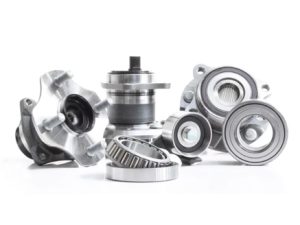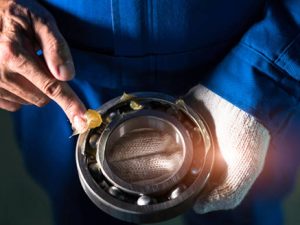Table of Contents
- The Importance of Hub and Bearing Systems
- Material Advancements: From Steel to Ceramic and Composites
- Advanced Manufacturing Techniques: 3D Printing and Nanotechnology
- Sealing and Lubrication Technologies: Maximizing Efficiency and Lifespan
- Integration with Smart Technology: Predictive Maintenance and Monitoring
- Environmental Considerations: Reducing Environmental Impact
In the ever-evolving automotive industry, performance and durability are paramount considerations for engineers and manufacturers. One of the key components that significantly impact both of these factors is the hub and bearing system. These parts, often taken for granted, are vital for ensuring the smooth operation of a vehicle, contributing to handling, safety, and efficiency. As technology advances, so too do the designs and materials used in hub and bearing systems. This article explores the innovative technologies currently shaping the design of hubs and bearings, and how these innovations improve performance, reduce maintenance costs, and enhance overall vehicle longevity.
The Importance of Hub and Bearing Systems

Before diving into the technological advancements, it’s crucial to understand the basic function of hubs and bearings. The hub, a central part of a wheel assembly, connects the wheel to the vehicle’s axle, facilitating rotation. The bearing, typically situated within the hub, allows the wheel to spin smoothly while bearing the weight of the vehicle. These systems are under constant stress, subject to high forces from friction, vibration, and temperature fluctuations. The longevity and reliability of bearings and hubs are vital for vehicle performance and safety, and as such, they have become focal points of engineering innovation.
Material Advancements: From Steel to Ceramic and Composites
One of the most significant trends in bearing and hub technology is the move toward advanced materials. Traditional steel bearings, while reliable, are being increasingly replaced by high-performance materials that offer better resistance to wear, reduced friction, and improved durability.
Ceramic Bearings
Ceramic materials, such as silicon nitride, are becoming increasingly popular in high-performance automotive applications. Ceramic bearings are lighter, harder, and more resistant to wear than their steel counterparts. These bearings also exhibit lower friction, resulting in less heat generation and improved fuel efficiency. Furthermore, ceramic bearings are less prone to corrosion, which extends their lifespan and reduces the likelihood of premature failure.
Carbon Composites
Another material gaining traction is carbon composite. Carbon composite bearings are made from carbon fibers embedded in a resin matrix, which makes them incredibly strong yet lightweight. These bearings are particularly useful in electric vehicles (EVs) where weight reduction is a key design consideration. Their high strength-to-weight ratio also makes them ideal for reducing unsprung mass, which directly improves handling and ride comfort.
Self-lubricating Materials
A major challenge for traditional bearings is maintaining adequate lubrication to minimize friction and wear. New self-lubricating materials, such as polymer-based bearings, offer a solution. These materials contain lubricants within their structure, allowing them to operate without the need for regular maintenance. This feature is particularly beneficial in reducing maintenance costs and enhancing reliability, particularly in harsh environments or for manufacturers aiming for lower maintenance vehicles.
Advanced Manufacturing Techniques: 3D Printing and Nanotechnology
The advent of advanced manufacturing technologies has brought about new possibilities for hub and bearing design. Traditional manufacturing methods, such as casting and forging, are still widely used, but they are being complemented—or in some cases replaced—by cutting-edge techniques that offer increased precision and customization.
3D Printing
Additive manufacturing, commonly known as 3D printing, has made a significant impact on the automotive industry, and it is beginning to be used in the production of hubs and bearings. 3D printing allows for the creation of complex geometries that would be difficult or impossible to achieve with traditional methods. This capability not only leads to weight reductions and material optimization but also enables the development of custom bearing designs tailored to specific applications.
Additionally, 3D printing allows for rapid prototyping, meaning that engineers can test and iterate designs more quickly, leading to faster innovations. This is particularly valuable when developing new types of hubs and bearings for emerging vehicle types, such as electric vehicles (EVs) and autonomous cars, which require different performance characteristics.
Nanotechnology
Nanotechnology is another groundbreaking field that is being applied to the development of hub and bearing systems. By manipulating materials at the molecular or atomic level, engineers can create surfaces that are smoother, stronger, and more resistant to wear. For example, nanoparticle coatings can be applied to the surfaces of bearings to reduce friction, increase load-bearing capacity, and protect against corrosion. These nanocoatings can also enhance the overall durability of hubs, extending their lifespan and reducing the need for replacement.
Sealing and Lubrication Technologies: Maximizing Efficiency and Lifespan

The longevity and performance of bearing systems are also heavily influenced by their ability to maintain proper lubrication and seal out contaminants. Advances in sealing and lubrication technologies are therefore crucial to improving hub and bearing performance.
Advanced Sealing Systems
Seals play an essential role in preventing the ingress of dirt, water, and other contaminants into bearing assemblies, which can cause premature wear and failure. Modern bearing designs increasingly incorporate advanced sealing technologies, such as labyrinth seals and lip seals, which offer superior protection against contaminants while minimizing friction. These seals are more efficient at maintaining a controlled environment within the bearing system, enhancing its longevity and reducing the frequency of maintenance.
Magnetic Lubrication Systems
One innovative approach to lubrication is the development of magnetic lubrication systems. These systems use magnetic fields to enhance the performance of the lubricant, increasing its viscosity and preventing it from breaking down under extreme pressure. Magnetic lubrication can also improve fuel efficiency by reducing friction even further, leading to smoother operation and less energy loss.
Integration with Smart Technology: Predictive Maintenance and Monitoring
As vehicles become increasingly connected, the integration of smart technologies into hub and bearing systems is also making a significant impact. Predictive maintenance tools and sensors are being used to monitor the health of bearings and hubs in real time, providing valuable data to both manufacturers and vehicle owners.
IoT Sensors and Condition Monitoring
Modern hub and bearing systems are being equipped with Internet of Things (IoT) sensors that monitor various parameters, such as temperature, vibration, and pressure. These sensors provide real-time data about the health of the components, allowing for early detection of potential issues, such as excessive wear or misalignment. This data can be used to schedule maintenance before a failure occurs, preventing costly breakdowns and reducing downtime.
Predictive Analytics
In addition to monitoring, predictive analytics plays a crucial role in optimizing hub and bearing performance. By analyzing data from the sensors, algorithms can predict when a bearing or hub is likely to fail, allowing for proactive intervention. This not only improves vehicle reliability but also enhances safety by preventing unexpected component failures during operation.
Environmental Considerations: Reducing Environmental Impact
As the automotive industry moves toward more sustainable practices, hub and bearing manufacturers are also focusing on reducing the environmental impact of their products. This includes developing materials that are more eco-friendly, reducing the energy required to produce and transport these components, and designing for greater recyclability.
Recyclable Materials
The push for sustainability has led to the development of recyclable bearing materials, such as aluminum alloys and biodegradable polymers. These materials can be more easily reused or repurposed at the end of their lifespan, reducing the overall environmental footprint of automotive manufacturing.
Energy-Efficient Production
Manufacturers are also investing in energy-efficient production processes, which help to minimize the carbon footprint of bearing and hub manufacturing. Techniques such as precision forging and powder metallurgy are more energy-efficient and produce less waste compared to traditional casting methods.
Conclusion: A Future of Enhanced Performance and Sustainability
Innovative technologies in hub and bearing design are driving significant improvements in vehicle performance, safety, and sustainability. From advanced materials such as ceramics and composites to cutting-edge manufacturing techniques like 3D printing and nanotechnology, these innovations are setting new standards for the automotive industry. The integration of smart technologies for predictive maintenance and the emphasis on sustainability further ensure that modern hubs and bearings are not only more efficient and durable but also more environmentally responsible.
As vehicles become more complex, with the rise of electric and autonomous cars, the need for advanced, high-performance hub and bearing systems will only increase. Manufacturers that embrace these technological advancements will be better positioned to meet the evolving demands of the automotive industry while providing consumers with safer, more reliable, and more efficient vehicles. The future of hub and bearing design is bright, and these innovations will continue to shape the vehicles of tomorrow.